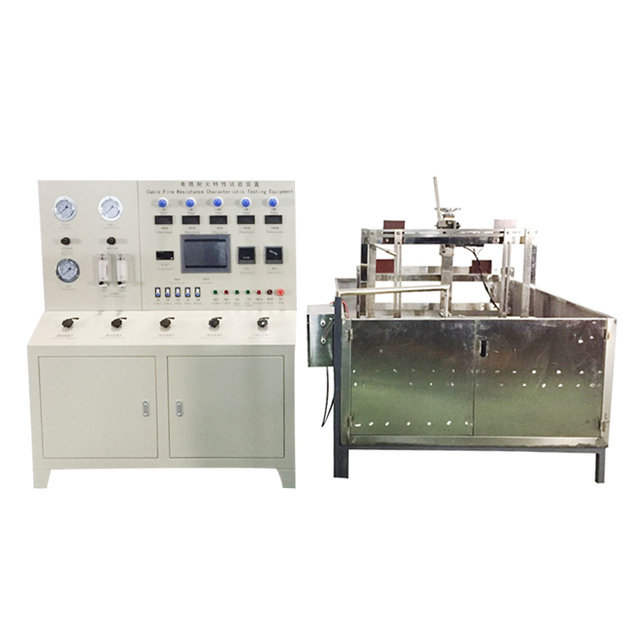Comprehensive Guide to Understanding and Performing Insulation Resistance Tests for Electrical Safety
Understanding Insulation Resistance Tests Importance and Procedures
Insulation resistance tests are a crucial aspect of maintaining electrical safety and integrity in various applications, from residential wiring to industrial plants. These tests evaluate the effectiveness of the insulation surrounding electrical conductors, which is essential for preventing short circuits, equipment failures, and potential fire hazards. This article will discuss the significance of insulation resistance testing, the procedures involved, and the factors that influence test results.
Importance of Insulation Resistance Testing
The primary goal of insulation resistance testing is to ensure that insulation materials are functioning correctly and providing adequate protection against electrical leakage. Over time, insulation can deteriorate due to factors such as environmental conditions, mechanical stress, and chemical exposure. Poor insulation can lead to increased leakage currents, resulting in equipment malfunctions, increased operational costs, and a heightened risk of electrical shock.
Regular insulation resistance tests help identify potential issues before they escalate into serious problems. By adhering to industry standards and performing these tests, organizations can ensure compliance with safety regulations, prolong equipment lifespan, and ultimately safeguard personnel and property.
Testing Procedures
The insulation resistance test is typically carried out using a specialized instrument known as an insulation resistance tester or megohmmeter. The procedure involves the following steps
1. Preparation Ensure that the equipment to be tested is de-energized, and all connected components are isolated. This prevents damage to the tester and ensures accurate readings.
2. Connecting the Tester Connect the leads of the megohmmeter to the conductor and ground. The positive lead is usually connected to the conductor being tested, while the negative lead is attached to a suitable ground.
insulation resistance tests

3. Setting the Voltage Most insulation resistance testers allow the operator to choose the test voltage. Common test voltages are 250V, 500V, and 1000V, depending on the application and the standards being followed. Higher voltages may provide more accurate readings for high-voltage systems.
4. Conducting the Test Start the test by activating the megohmmeter. It will apply the selected voltage across the insulation, measuring the resistance in megaohms (MΩ). A higher resistance value typically indicates good insulation, while a low value may signify insulation breakdown or degradation.
5. Recording Results Once the test is complete, record the resistance value. It is advisable to perform multiple tests at different intervals to monitor trends over time.
6. Interpreting Results Compare the measured resistance values to the acceptable standards for the specific application. Generally, insulation resistance values should be above 1 MΩ for low-voltage systems, and higher for high-voltage applications.
Factors Influencing Test Results
Several factors can affect the accuracy and reliability of insulation resistance testing. Temperature and humidity can significantly influence resistance readings. For instance, wet conditions can lower resistance and lead to false readings. Additionally, the age and material of the insulation can impact the test results. It is essential to consider these factors when interpreting the outcomes.
Furthermore, the cleanliness and condition of the insulation surface are critical. Contaminants such as dust, oil, or moisture can introduce additional paths for leakage and skew the results, making regular maintenance and cleaning an integral part of the testing protocol.
Conclusion
Insulation resistance tests are essential for ensuring electrical safety and reliability. By identifying potential insulation failures early, organizations can mitigate risks and enhance the performance of their electrical systems. Regular testing, coupled with an understanding of the testing procedures and influencing factors, forms the backbone of a robust electrical maintenance strategy. Ultimately, investing time and resources into insulation resistance testing translates into increased safety and efficiency for all electrical applications.
-
The Role of Tensile Force Testers in Quality Control and Material Science
NewsAug.01,2025
-
Maintenance and Safety Tips for Aging Ovens
NewsAug.01,2025
-
Density Balance in Forensic Science
NewsAug.01,2025
-
Advanced Optical Measurement Technologies
NewsAug.01,2025
-
A Buyer’s Guide to Tensile Test Machines
NewsAug.01,2025
-
Why the Conductor Resistance Constant Temperature Measurement Machine Redefines Precision
NewsJun.20,2025
 Copyright © 2025 Hebei Fangyuan Instrument & Equipment Co.,Ltd. All Rights Reserved. Sitemap | Privacy Policy
Copyright © 2025 Hebei Fangyuan Instrument & Equipment Co.,Ltd. All Rights Reserved. Sitemap | Privacy Policy
